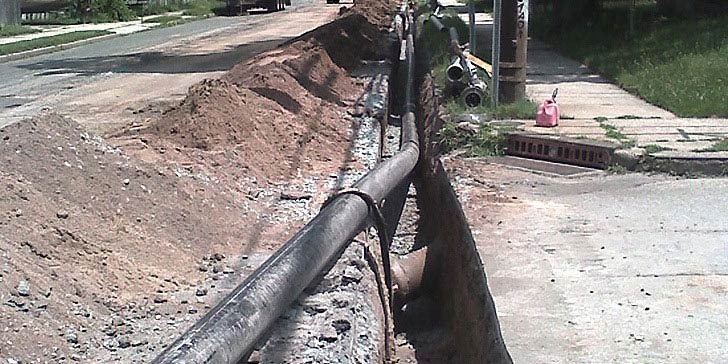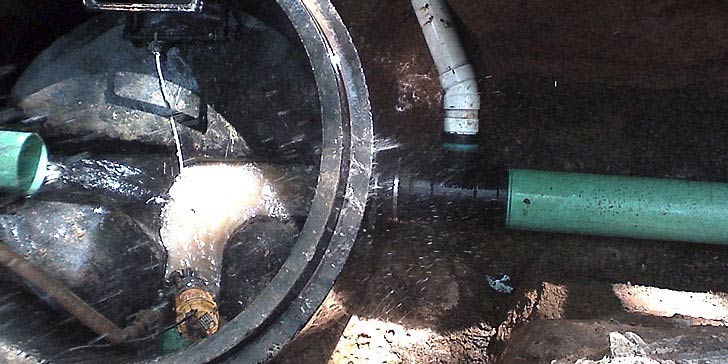We Offer Free Video Inspections!
Sewer Lines in New Jersey: Which Trees Cause the Most Pipe Damage?
Avoid cracks in your sewer line with these tips provided to our New Jersey clients
Getting a crack in your New Jersey sewer line can be a major headache to deal with. Among the various reasons home and commercial sewer lines may fail, intrusion from invasive tree roots is considered one of the most common - and often the most problematic. Intrusions clog, crack and cause a slew of other serious pipe issues if unattended.
While there are methods to restore pipes affected by root damage (as we’ll detail later in this blog), you can often make smarter landscaping decisions early on to avoid intrusions altogether. A lot of this depends on knowing where your underground pipe lines lie, as well as what plant species require deep or wide roots - species to avoid if pipes run across or throughout your lawn, or are within a certain depth range.
Tree Species With the Most Invasive Roots
We can go on for days about the types of problems and damage tree roots cause. However, if you’re planning on renovating your lawn and planting new trees to add to aesthetics or property value, what you really need to know is the most hazardous species to underground pipes. So let’s cut to the chase. The following are tree and plant species that often cause sewer line intrusion and damage:
- Sycamore trees
- Willows
- Oak and fig trees
- Maple trees
- Aspen trees
- Elm trees
- Birch trees
While these trees can cause major root damage to underground sewer pipe lines, they don’t need to be out of the picture completely. A plumbing or landscaping expert can provide insights into typical root length, in relation to your pipe depth, type and location.
Trees that pose little or no threat to underground sewer lines (ones you can plant at no risk to your plumbing!) include:
- Mediterranean fan palms
- Many fruit tree species
- Certain cypress and cedars
- Wafer ash
- Sabal palmetto
- Magnolias
If you know where pipe lines run beneath your home and property, you can plant problematic species accordingly, at enough range that roots do not put pipes at risk. However, if you don’t have this information on file, you should consider the above low-risk species, or contact a plumbing expert to determine where pipes run under your property.
Types of Pipe Weak to Root Intrusion
Naturally, some types of pipe can withstand the elements better than others; this also applies to root intrusion and growth. Steel and PVC pipe lines, for instance, are the least susceptible pipe materials to root damage. Steel pipe lines are durable enough to avoid puncturing by tree roots, and PVC or cured-in-place pipe lines do not give many points for roots to intrude in the first place.
Cement, Clay, Orangeburg or cast iron pipes, on the other hand, degrade significantly over time and are particularly prone to root damage. For root intrusions in these pipe systems, it’s often more effective - and economical, in the long term - to replace the pipe entirely. This can be done either by pipe bursting or trenching, with the best option depending on pipe depth and length, as well as surface level elements.
What You Can Do: Trenchless Lining, Bursting or Spot Repair
For moderate to low intrusions, many homeowners turn to trenchless pipe lining as an effective long-term solution to root intrusion. In this application, trenchless specialists will clear roots from your sewer line and coat inner pipe walls with an epoxy resin; this can be done to entire pipe lengths or isolated locations (known as spot repair), depending on the extent of intrusion.
Pressurized by an inflatable air bladder, this resin cures in-place in a few hours’ time, effectively creating single-bodied, durable pipe walls/segments (depending on the application). As PVC pipes are considered by far the most resilient to root intrusion, this guarantees plumbing system safety for decades to come (Note that these pipes aren’t invincible - deep or fast rooting trees can still cause damage, if planted within close proximity).
If you’re planning on renovating your lawn and planting new trees, knowing the right place to plant and the right type of tree to plant is essential. If you believe your home sewer line has already fallen victim to intrusion, don’t wait for the problem to worsen. Reach out to a trenchless pipe repair specialist sooner, rather than later.
View Source
Read More Articles




